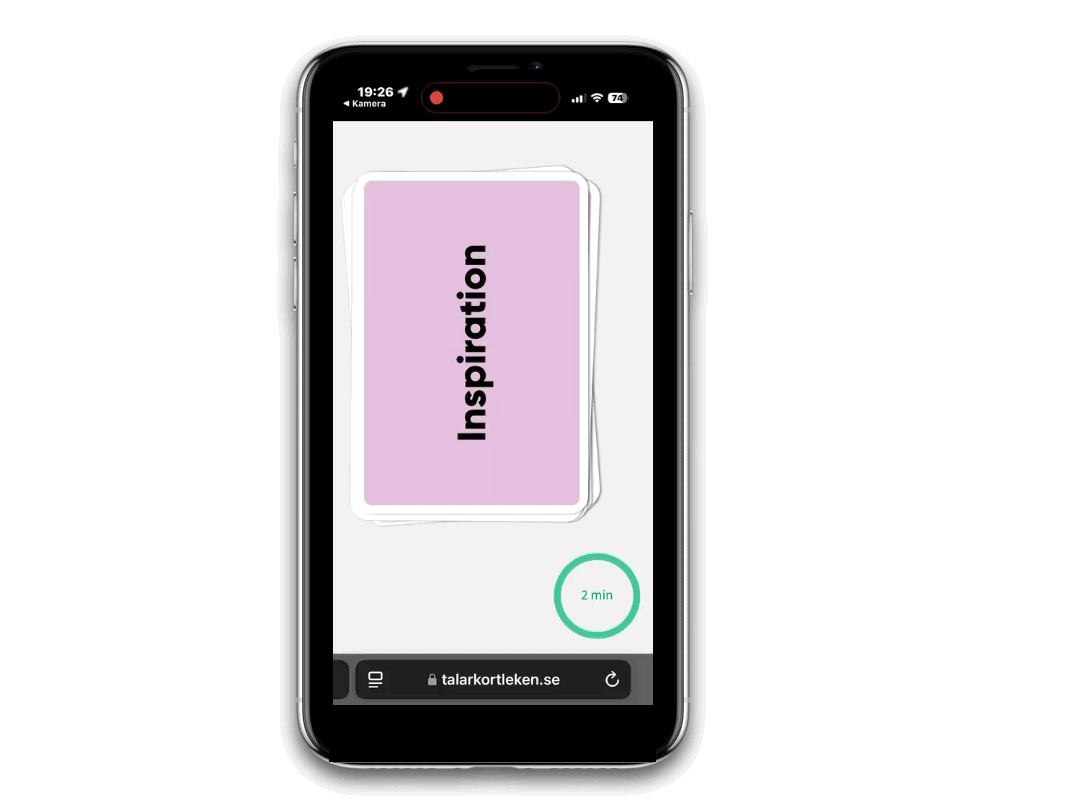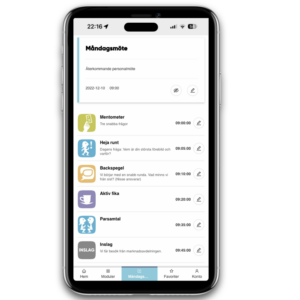Speaker’s Deck, digital game in presentation skills
Fr 99 kr
Ordrum trains individuals and groups in presentation techniques, among other things. The Speaker’s Deck is a creative teaching aid for practicing presentations. The game is a playful exercise in spontaneity, presence, and audience contact.
The digital card game determines what topic you will talk about, who you are as a speaker, who your audience is, and what place you are performing in. There are also cards that indicate a complication—such as a broken projector—as well as questions and tasks for the observers, those who are listening. You choose how many categories you want to use. Below is a detailed description of the categories.
HOW TO PLAY
1 Click on the link you received when you purchased a license. Here is a demo version of the Speaker Deck
2 Select the cards you want to use by clicking on them
3 Give the speaker time to prepare
4 Give the participants who will provide feedback their assignments via the QR code found under “How to play” at the top of the game window.
5 Ask the speaker to begin and press the three-minute timer at the bottom of the game window.
6 When the time is up, you can ask the participants who will provide feedback to do so based on the assignment they received via the QR code.
Try it out
Here you can try out The Speaker Deck, demo version
Description of the card categories
Audience
In all speaking situations, the listener is the most important person in the room. The listener must feel involved in order to trust the speaker and thus choose to listen to you. That is why it is important for you as a speaker to be aware of the listener. Who are you speaking to? What do they know about the subject? What are their expectations? You can practice adapting your speech depending on whether your audience is farmers, elementary school teachers, or something else with the Speaker’s Deck. One tip is, of course, to use examples in your speech that your target audience can relate to.
Speaker
In this training material, you will also learn who you are, or at least what your profession is. This is of course important in a speaking situation. One tip for getting your audience to want to listen to you is to actively work to connect with them. Emphasize the connections between you and your audience. What are the points of contact? The aim is to build trust in this way.
Subject
You must, of course, have knowledge of a topic in order to talk about it. The headings in the Speaker’s Deck are almost always broad, and the idea is that you should not need to be an expert on the topic to talk about what is written there. The topic card gives you a lot of freedom in what you want to talk about. One tip for your brief preparations is to write down a few points that you want to cover. An introduction, where you connect yourself to the listeners, and some kind of conclusion (e.g., a brief summary of what you have said or something that looks ahead).
Place
The layout of the venue is important for how well your speech works. Adapt your way of speaking to the conditions of the venue. Our advice in real life is to arrive at the venue where you will be speaking well in advance, so that you have time to adapt the venue to your needs.
Complication
Things never turn out as planned. We can assume that. It is therefore a good idea to be prepared to change your plan. In our book Speaker’s Cookbook, we write about planning in modules, i.e., in smaller (and prioritized) parts. This makes it easier for you to jump into your material and prioritize and deprioritize during the presentation.
Feedback
Without feedback, there is no development. That is why Speaker’s Deck contains cards that the audience can use. Some of the cards give the listener a feedback task. This could be specific details in the speech that the listener should pay extra attention to – and provide feedback on. (Other cards in this category are about things the audience can do to challenge the speaker a little extra).
WHAT YOU NEED
You need a tablet/computer with an internet connection for each group that is going to play. The appropriate group size is 5-10 people. The game can be played on several tablets/computers at the same time. Nothing needs to be installed.
Description
LANGUAGE: English
NUMBER: 180 playing cards
CARD CATEGORIES: Subject, Audience, Speaker, Place, Complication, Observer (which participants view on their own mobile phones using a QR code)





Reviews
There are no reviews yet.